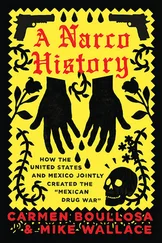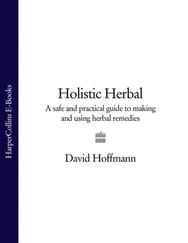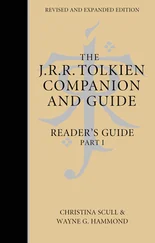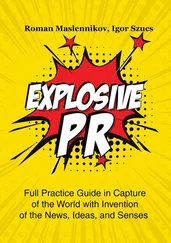5 Q. What is generic equivalency?
6 A. Generic equivalency was developed to save consumers and insurance companies high costs. Generic drugs are much cheaper because of competition between drug manufacturers once the patent has expired. Also, it costs less to manufacture generic drugs. Many brand name drugs have less expensive generic substitutes that according to the FDA are therapeutically and biochemically equivalent to the brand name drug. The FDA requires the bioequivalence of the generic drug (active ingredient) to be between 80% and 125% of that of the brand name drug. Generics are considered by the FDA to be identical in dose, strength, safety, efficacy, and intended use (Balthasar 1999; Greene et al. 2001; Meridith 2003).
7 Q. Is a generic drug always equivalent to a brand name drug?
8 A. According to the law, drug companies are required to prove bioavailability. Many drugs that are available generically are equally efficacious with the equivalent brand name (Birkett 2003).
9 Q. What is generic substitution and how do I know if a generic drug substitute is available?
10 A. Generic substitution is the process by which a brand name drug is dispensed by a different form of the same active substance (Posner and Griffin 2011). There is a book called the “Orange Book: Approved Drug Products with Therapeutic Equivalence Evaluations” that all pharmacies have, and since February 2005, there has been a daily Electronic Orange Book (EOB) product information for new generic drug approvals. The downloaded Annual Edition and Cumulative Supplements are also available in a paper version (Approved Drug Products with Therapeutic Equivalence Evaluations, ADP 2008) from the US Government Printing Office: http://bookstore.gpo.gov; toll free telephone number 866‐512‐1800.
11 Q. How do I write for a generic substitute on a prescription?
12 A. Prescriptions have instructions on whether the prescriber will allow the pharmacist to substitute a generic version of the drug. This instruction is communicated in several different ways which differ among states. Usually, the prescription contains two signature lines. One line has “substitution permitted” or “substitution permissible” printed at the bottom of the prescription and the other line has “dispense as written” or “do not substitute.” The prescriber signs either line. Some states have a “daw” (dispense as written) box printed at the bottom of the prescription. This means that the prescription will be filled generically unless the prescriber writes “daw” in the box, in which case the prescription will be filled the way it is written by the prescriber. For example, if you write a prescription for the trade name of a drug such as Vibramycin® (the patient only wants to take a brand name drug) and sign the line “do not substitute” or write “daw” in the box, the prescription will be dispensed with the brand name drug rather than the generic substitute (doxycycline) (Meridith 2003).
13 Q. When should a generic drug rather than a brand name drug be prescribed?
14 A. Any time. It is the decision of the patient. Most drugs today are dispensed as generic. Generic substitution is intended for the pharmacist to use a form of the drug which may be less expensive to the patient. It is usually the cheaper drug yet still has the same FDA guidelines in manufacturing and should be equal in efficacy to the brand name drug. However, if the prescriber writes a prescription for the brand name drug and signs “do not substitute,” the patient cannot request the generic (Food and Drug Administration [FDA] – Center for Drug Evaluation and Research [CDER]. Statistical approaches to Establishing Bioequivalence 2001).
15 Q. Who decides to choose a generic substitute?
16 A. The patient makes the decision as long as the prescription is signed by the prescriber to allow for substitution. If the prescriber does not sign the appropriate place to allow for generic substitution, the pharmacist must dispense the generic.
*Note: Always confirm any drug laws with your state regulations because the most restrictive clause will prevail, whether state or federal .
1 Q. What are controlled substances?
2 A. Controlled substances come under the jurisdiction of the Controlled Substances Act of 1970. The federal agency is the DEA and the State agency is the Division of Narcotics and Dangerous Drugs of the DHHR. The Controlled Substances Act 1970 was developed to educate and monitor the prescribing and dispensing of potentially addictive substances into five Schedules according to their potential for abuse or physical or psychological dependence.
3 Q. What is the schedule for marijuana?
4 A. Even though marijuana is legal in some states and many groups want it rescheduled, the government says it is still a dangerous drug and should not be rescheduled. However, Epidiolex® (a drug derived from cannabidiol which is contained in the marijuana plant and indicated for Lennox–Gastaut syndrome) has been rescheduled to a Schedule V controlled substance.
5 Q. What is the definition of physical dependence?
6 A. Physical dependence is a physiological state characterized by the development of an abstinence syndrome on abrupt withdrawal of the medication. Physical dependence does not imply abuse or addiction.
7 Q. Sometimes controlled substances are written as Schedule III or “C‐III.” Is there a difference?
8 A. No. The C refers to controlled substance. Drugs which are subject to control under the Controlled Substances Act are assigned to one of five schedules, referred to as controlled substance schedules: Schedule I controlled substance, Schedule II controlled substance, Schedule III controlled substance, Schedule IV controlled substance and Schedule V controlled substance, depending on the abuse potential. These schedules are commonly shown as C‐I, C‐II, C‐III, C‐IV, and C‐V.
9 Q. What are the different controlled (scheduled) drugs?
10 A. Refer to Table 2.1.
11 Q. Is a DEA number required to prescribe an opioid?
12 A. Yes. A dentist is required by law to register with the DEA in Washington, to dispense, store or prescribe controlled drugs. A DEA number will be issued to the prescriber in the state where they are practicing dentistry. If the state requires that the dentist have a State Controlled Substance Number, in addition to the DEA number, then the DEA will require that this number be issued before the DEA number can be issued. Twenty‐six states that require a Controlled Substance Number and a DEA number are New Jersey, Alabama, South Carolina, Nevada, Iowa, District of Columbia, Utah, Oklahoma, Massachusetts, Michigan, Illinois, Connecticut, South Dakota, Louisiana, Guam, Wyoming, Puerto Rico, Rhode Island, Missouri, Indiana, Delaware, Texas, New Mexico, Maryland, Hawaii, and Idaho. There must be a space on the prescription to write in the DEA number. Table 2.1 Controlled drugsScheduleAbuse potentialExamplesC‐IHighestNot accepted for medical purposes: heroin, lysergic acid diethylamide (LSD), methaqualone, peyote, 3,4,methylenedioxymethamphetamine (“Ecstasy”), marijuanaC‐IIHighOxycodone/acetaminophen (Percocet®, Tylox®), hydrocodone/acetaminophen (Vicodin®, Lorcet®), meperidine (Demerol®), codeine, cocaine, morphine, oxycodone (OxyContin®), methadone (Dolophine®)C‐IIILess potential than C‐IIAcetaminophen w/codeine, phenobarbitalC‐IVLess potential than C‐IIIZolpidem (Ambien®), diazepam (Valium®), alprazolam (Xanax®) a C‐VLimited abuseCough syrups with codeine, antidiarrheals such as diphenoxylate/atropine (Lomotil®) a In certain states like New York, Schedule IV benzodiazepines (e.g., Valium, Xanax) are treated as Schedule II.
13 Q. Are prescription writing rules for controlled substances state or federal regulated?
Читать дальше












